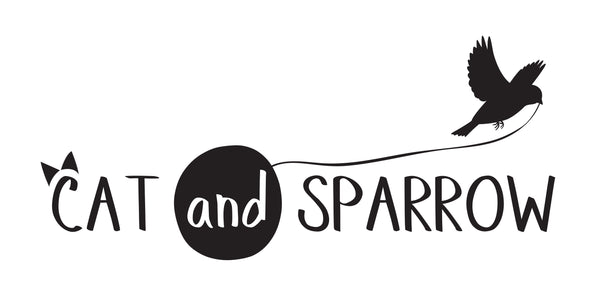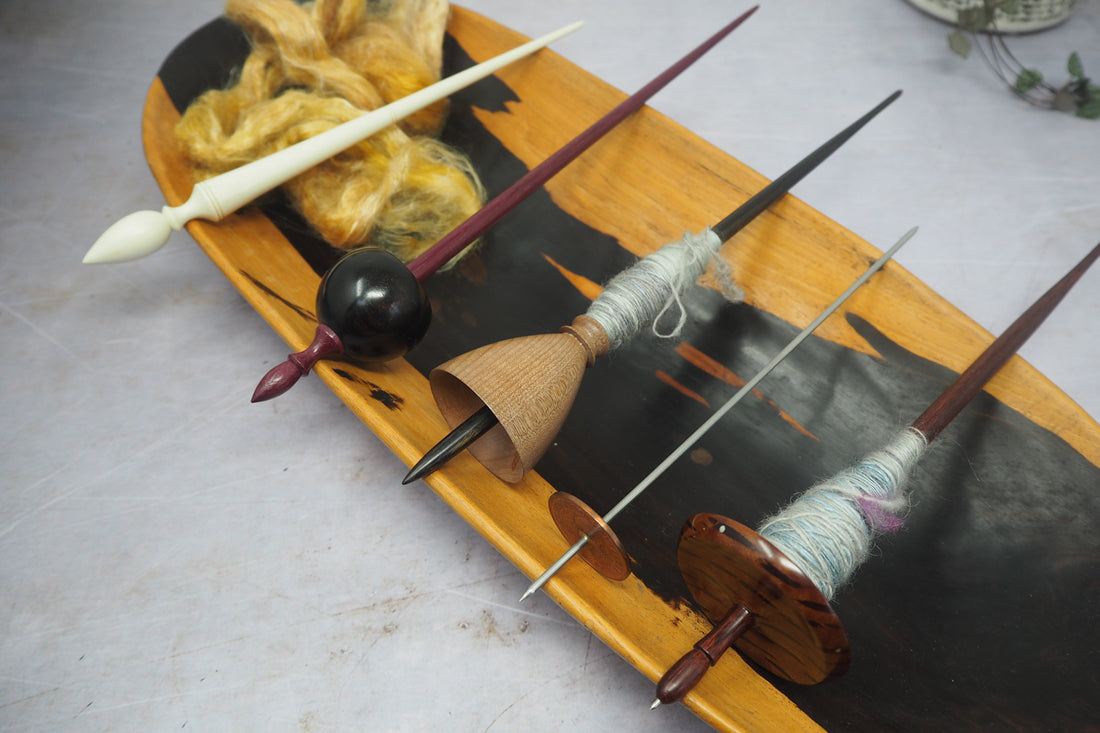Spindle types
Whorled spindles
As suggested by the name, these spindles have a definite whorl on the bottom, or near the middle of the shaft. The main two types are Tibetan spindles and Tahklis.
Tahklis are an Indian spindle. They're usually very small and quite heavy, with a sharp tip. Traditionally made of metal, they spin extremely fast because there is very little friction between the sharp tip and the supporting surface.
Tibetan spindles are usually made of wood, and are lighter and larger than tahklis, with a similar disk-shaped or sometimes cup-shaped whorl.
There are a couple of other types of whorled supported spindle that you might want to try. The Navajo spindle, which is usually about two feet long, and rests on the floor, is traditionally used to spin the wool of the Navajo churro into thick yarn for rugs and blankets. The other type is a kick spindle, which is a bit of a cross between a spinning wheel and and spindle. The spindle wheel is fixed to a platform, with the shaft and sometimes a bobbin extending from it at a 45-degree angle. Spin is added by 'kicking' it into motion, and then spinning off the point of the shaft.
Whorl-less spindles
The whorl-less spindle group includes Russian spindles, which are exquisitely elegant in shape and used to spin extraordinarily fine yarns that are then turned into gossamer lace shawls. Russian spindles tend to be very light, and they don't have a lot of momentum so they need to be kept in motion pretty constantly. I have to confess that I still haven't got the hang of my tiny little Russian, but I'm keeping at it because I love it so much, and I am determined to master it.
Another type that eschews the whorl is the Phang, which looks like a beautifully sculpted stick, with a shape a little like a woman's silhouette. The curvier the phang, usually the faster it spins, as more weight is distributed at the 'rim' than in the centre. Generally, because they don't have a whorl to speak of, they don't have a great deal of momentum, and so need constant spinning, a little like the Russian spindles.
Choosing a spindle
Weight and speed
A number of things determine the speed of a supported spindle: its weight, the material used for the tip, and the size and shape of the whorl.
Some makers, particularly of Tibetan spindles, use ball bearings as tips, or make them extremely sharp with a dense, hard-wearing wood. Tahklis usually have a very sharp metal shaft. The sharper the tip, the faster the spin.
In terms of the whorl, the same thing applies as for drop spindles - the further the weight is distributed from the shaft, the longer the spin. The more weight close to the shaft, the faster it will go. Cup-shaped spindles have the best of both worlds, with a lot of weight distributed around the edge of the whorl, but plenty close to the shaft as well, as the base of the cup tapers inwards.
You also need to consider the weight. Heavier spindles will usually spin for longer, and you can use that momentum to help you draw out the fibre. Lighter spindles need more help to keep moving. The weight of the spindle in this case doesn't necessarily determine how finely you spin, as gravity isn't a factor.
Height/length
Another thing to consider is the length of the spindle's shaft, or its height from the surface you're spinning on as it will make a big difference to your spinning experience. Obviously, with a Navajo spindle you can adjust the height of your seat to make yourself comfortable, but with smaller spindles, you need to think about what you're most likely to use.
Will you spin on your lap, or on a table in front of you? What angle will your arms be at while you draft? The longer the shaft, the lower you'll probably want to put the spinning surface. Try spinning an imaginary spindle and see if you can measure the length between the surface and where your arms feel comfortable. That should give you a good idea of what you're looking for in terms of spindle height.
Material
The last thing to think about is what you want to spin. As with drop spindles, the faster the speed of the spindle, the more quickly it adds twist to your fibre. Fast spindles are great for shorter fibres, and spindles with lots of momentum and medium speeds are brilliant for fibres with longer staples. I love to use my Takhli to spin sari silk roving and super short fibres like yak.
Preparation is also important with supported spindles. Because you're using the energy of the twist to draw the fibre out, rather than using a short forward draw, you want something that's very open, such as a carded batt or a rolag.
It's much easier to spin on a supported spindle if you're not drawing fibres out from a combed preparation, as there's less friction as the fibres move against each other. One option, if you do want to spin top, is to spin from the fold, as this again reduces friction.
It's really useful to try out a few styles and find out what works for you. A good supported spindle will keep its value, and they are generally not hard to move to a new home. If you have any questions, do let me know – I'm always happy to talk spindles! For my post on how to choose a drop spindle, go here. For my post on the general characteristics of spindles, go here.

